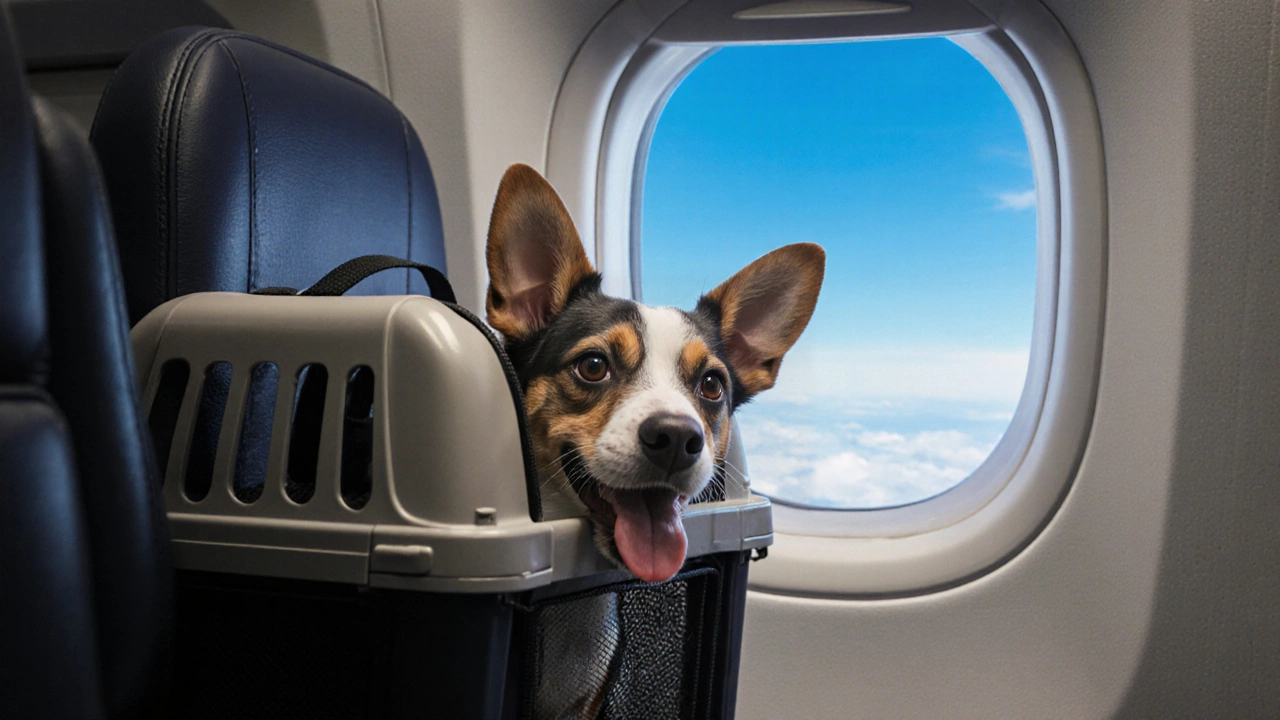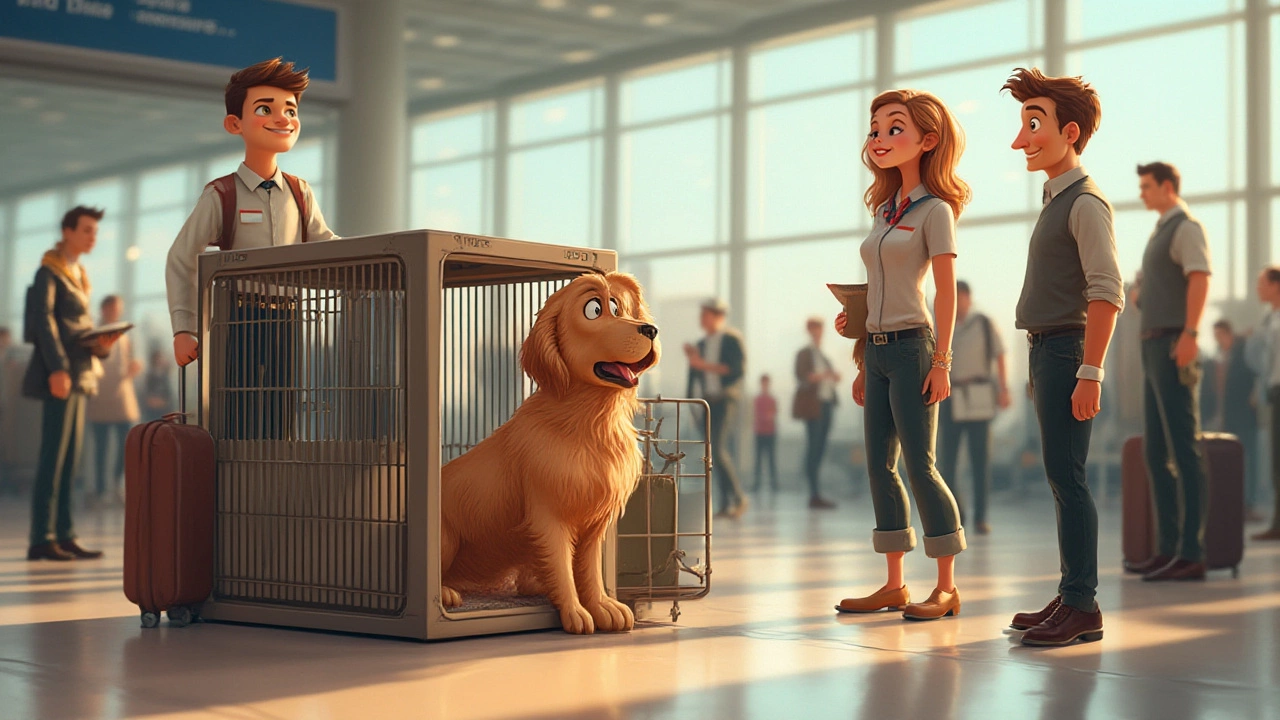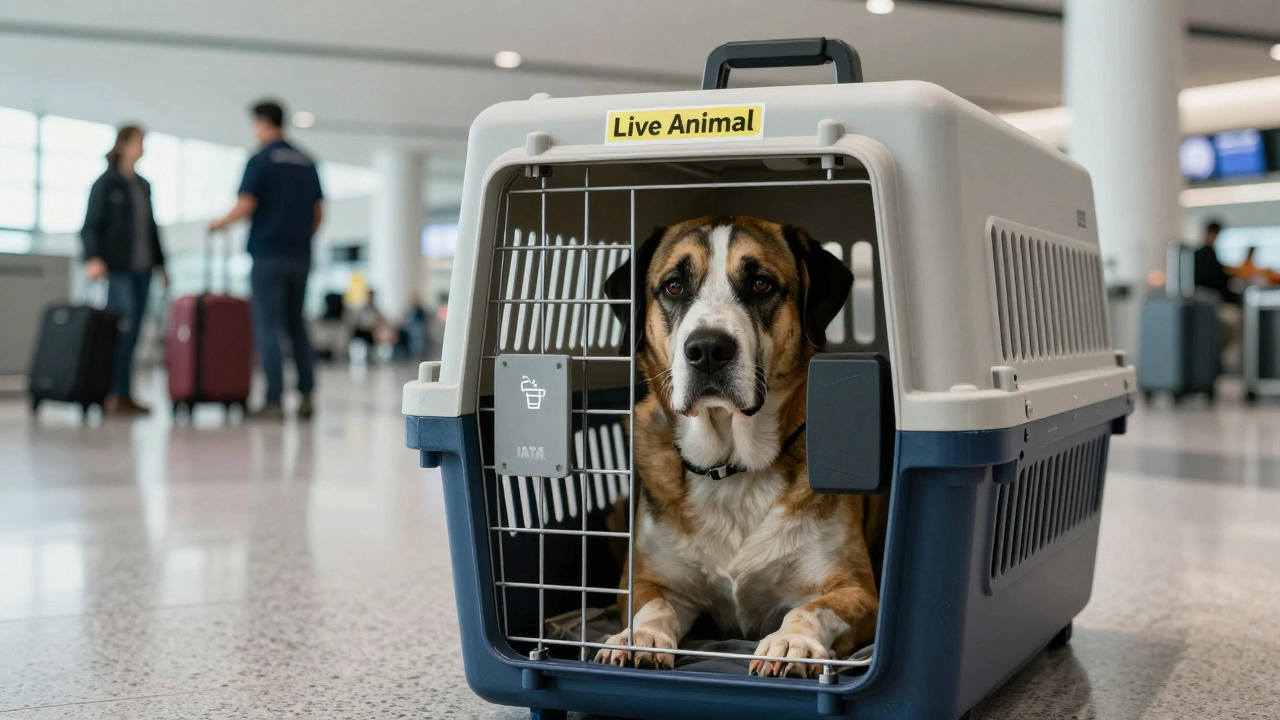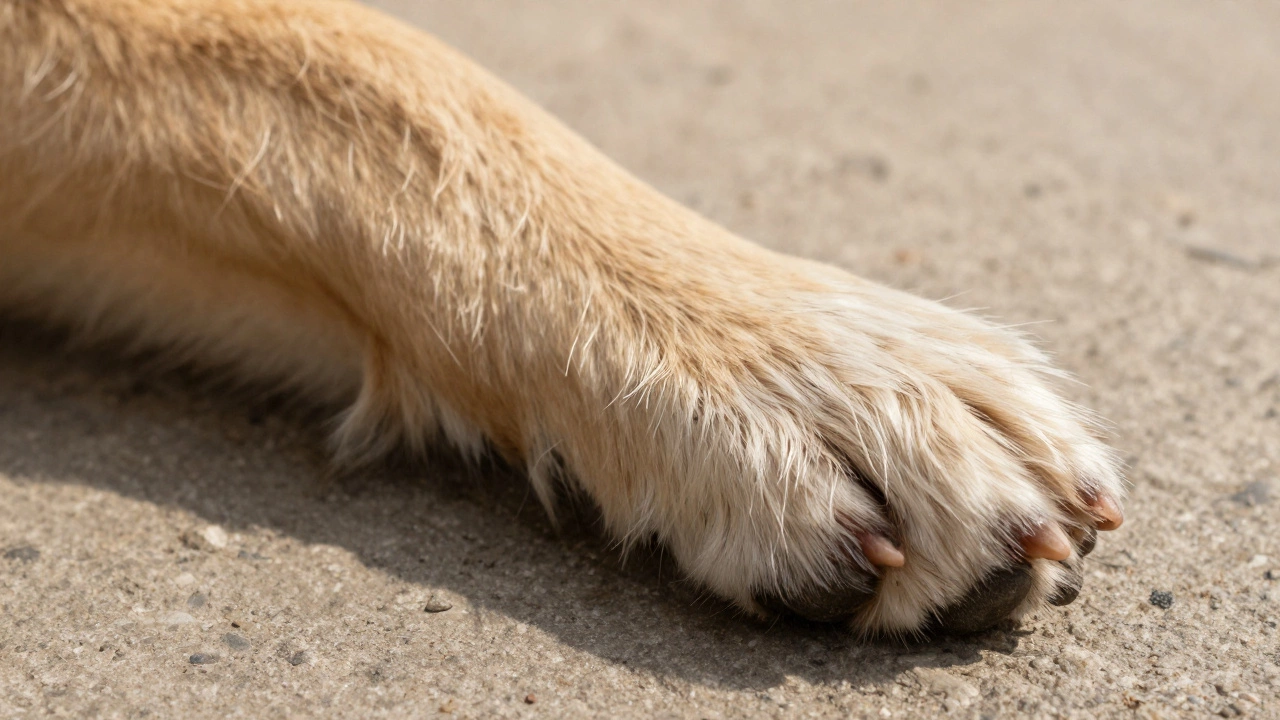Dog Air Travel Stress Risk Calculator
This calculator helps you evaluate your dog's potential stress level during air travel based on several factors discussed in the article. It provides personalized recommendations to help you decide if air travel is safe for your dog.
Ever wondered whether your pup will enjoy the view from a plane window or end up terrified for the whole trip? Knowing how traumatic flying can be for a dog helps you decide if the sky is a good idea or if a road trip is safer.
What a dog’s stress response looks like
When a dog senses danger, its body releases adrenaline and cortisol. The result? A faster heartbeat, widened pupils, and a surge of energy that can turn into barking, panting, or even shaking. This "fight‑or‑flight" reaction is natural, but in the confined, noisy environment of an aircraft it can feel overwhelming.
Air travel options: cabin vs. cargo
Most airlines let small dogs (dog air travel travel in the passenger cabin, usually in an airline‑approved carrier that fits under the seat) stay with you. Larger dogs are shipped in the cargo hold, a temperature‑controlled section of the plane. Both settings have pros and cons:
- Cabin: Direct contact with you, less temperature fluctuation, but limited space and a stricter weight limit.
- Cargo: More room in a sturdy crate, but the dog is isolated from the owner and may experience louder engine noises and vibrations.
Understanding these differences is the first step toward gauging potential trauma.
Red flags: how to spot trauma before, during, and after a flight
Dogs give you clues, and the earlier you notice them, the quicker you can intervene.
| Stage | Common signs |
|---|---|
| Pre‑flight (at home or airport) | Refusal to eat, excessive licking, hiding in carrier |
| During flight (cabin) | d>Whimpering, panting, trying to escape the carrier|
| During flight (cargo) | Vocalizing through crate slats, pacing, drooling |
| Post‑flight (arrival) | Sudden aggression, trembling, diarrhea, vomiting |
When you see several of these signs together, treat the experience as a genuine trauma and consider a calm recovery period.
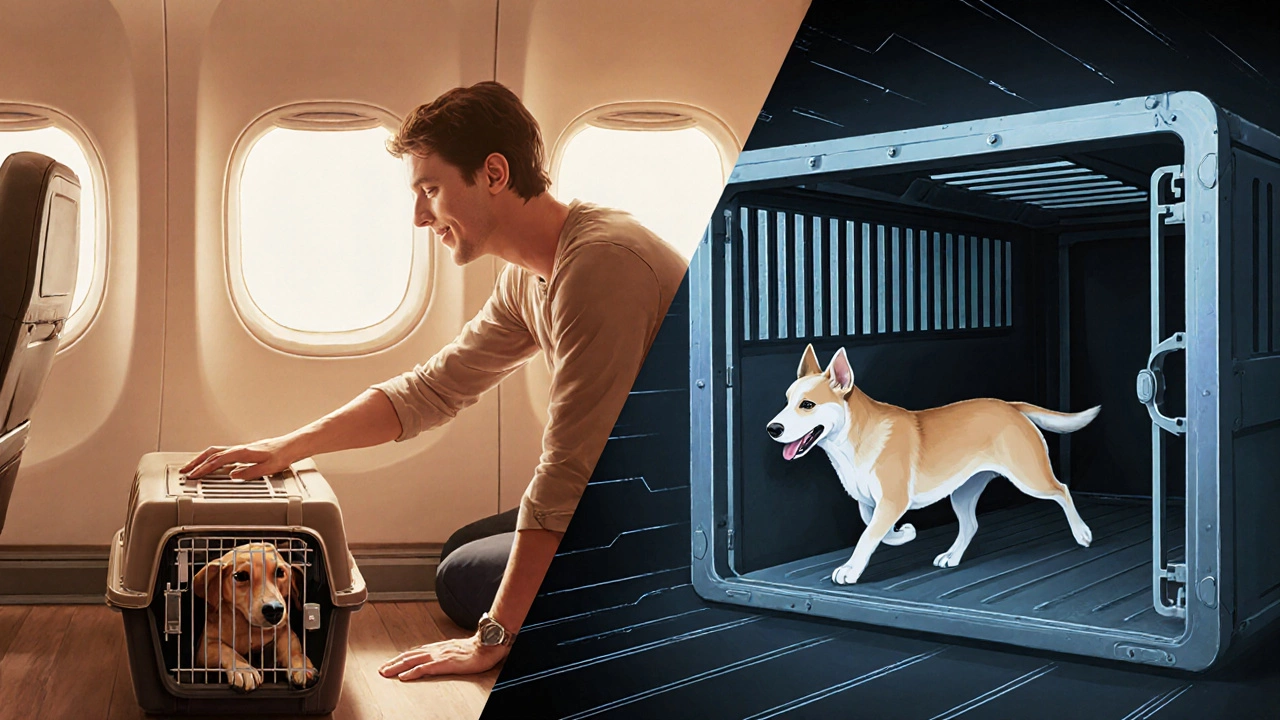
What makes a flight stressful for dogs?
Several factors can turn a routine trip into a nightmare for your canine companion:
- Cabin pressure changes - rapid altitude shifts can cause ear discomfort, much like humans experience on a plane.
- Noise levels - engine roar, cabin announcements, and the whir of air vents create a sensory overload.
- Temperature fluctuations - especially in the cargo hold, where temperature can swing by several degrees.
- Separation anxiety - being away from the owner, even for a short time, can trigger distress.
- Unfamiliar surroundings - the metal cage and strangers handling the crate add to the unease.
Preparing your dog for a safe flight
Preparation starts weeks before you even book a ticket. Follow these steps to lower the risk of trauma:
- Get a health check. A vet must issue a Veterinary certificate stating your dog is fit for travel. Ask about ear‑dropping medication if your pup is prone to barotrauma.
- Choose the right carrier. It should be large enough for your dog to stand, turn around, and lie down. Look for an airline‑approved crate that has ventilation on all sides.
- Acclimate the carrier. Place treats, a favorite blanket, and a chew toy inside. Let your dog spend a few minutes in it each day, gradually increasing the duration.
- Practice short trips. Take the carrier on car rides or to a nearby park. The goal is to associate the crate with positive experiences, not confinement.
- Discuss sedation with your vet. Most veterinarians advise against sedatives for air travel because they can affect a dog's ability to regulate temperature. In rare cases, a mild anti‑anxiety medication may be prescribed.
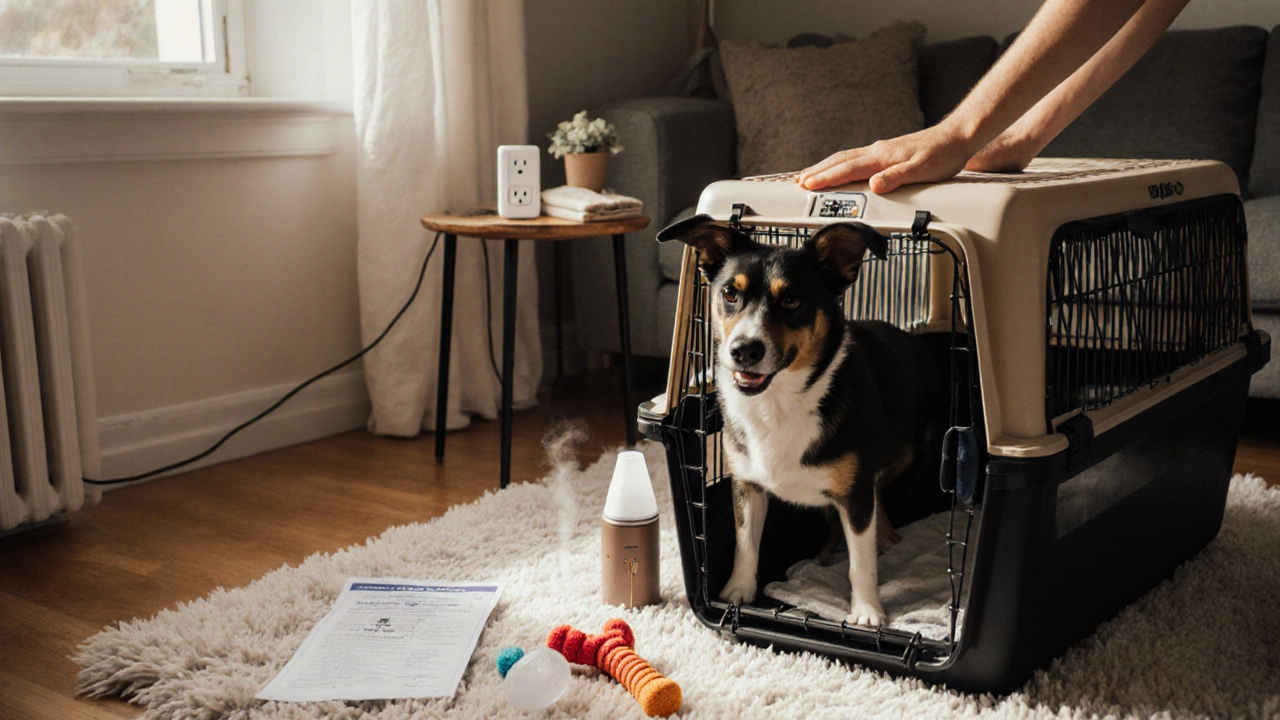
Mitigating trauma: on‑the‑day tips and useful products
When the big day arrives, these tricks can keep anxiety at bay:
- Use a Calming pheromone diffuser (like Adaptil). Plug it into the carrier a few minutes before boarding.
- Offer a frozen Kong filled with peanut butter or wet food. The cold treat serves as a distraction and can help regulate body temperature.
- Keep the carrier covered with a breathable blanket to limit visual stimulation, but ensure airflow isn’t blocked.
- Stay calm yourself. Dogs read our body language; a relaxed owner often translates to a calmer dog.
- Ask the airline staff to place the crate in a low‑traffic area of the cargo hold, away from direct airflow vents.
Quick checklist before you board
| Item | Done? |
|---|---|
| Veterinary health certificate (within 10 days of travel) | ☐ |
| Airline‑approved carrier (measured correctly) | ☐ |
| Familiar blanket or toy inside carrier | ☐ |
| Calming pheromone diffuser or spray | ☐ |
| Frozen treat for distraction | ☐ |
| Copy of airline pet policy and reservation confirmation | ☐ |
| Microchip ID and up‑to‑date collar tags | ☐ |
Running through this list reduces surprises and lets you focus on keeping your furry friend calm.
When to reconsider flying
If your dog shows any of these conditions, opt for ground travel or postpone the trip:
- Severe anxiety or aggression toward carriers.
- Recent surgery, wounds, or illness that could worsen with vibration.
- Age‑related frailty - very young puppies (under 8 weeks) and senior dogs (over 12 years) often struggle with temperature changes.
Choosing a road trip, train, or pet‑friendly ferry may be a gentler alternative.
Can I give my dog a sedative before a flight?
Most vets advise against sedatives for air travel because they can interfere with a dog’s ability to regulate body temperature and react to emergencies. If anxiety is extreme, a low‑dose anti‑anxiety prescription may be considered, but always follow professional guidance.
What size dog can travel in the cabin?
Airlines typically allow dogs up to 15‑20 lb (7‑9 kg) that fit in a carrier measuring around 45 cm × 30 cm × 20 cm (18 × 12 × 8 in). Always check the specific airline’s policy before booking.
How can I protect my dog’s ears during altitude changes?
Offer a chew toy or a treat that encourages the dog to swallow and equalize pressure. In some cases, veterinarians may prescribe an ear‑dropping solution before the flight.
Is it safer for my dog to fly in the cargo hold?
Cargo holds are climate‑controlled, but the dog is separated from the owner and may experience louder noises. For well‑behaved, comfortably sized dogs, cabin travel is usually less stressful.
What should I do if my dog shows severe stress after landing?
Give a quiet space, offer water, and let the dog settle. If vomiting, diarrhea, or aggression continues beyond an hour, contact your vet for a check‑up.

